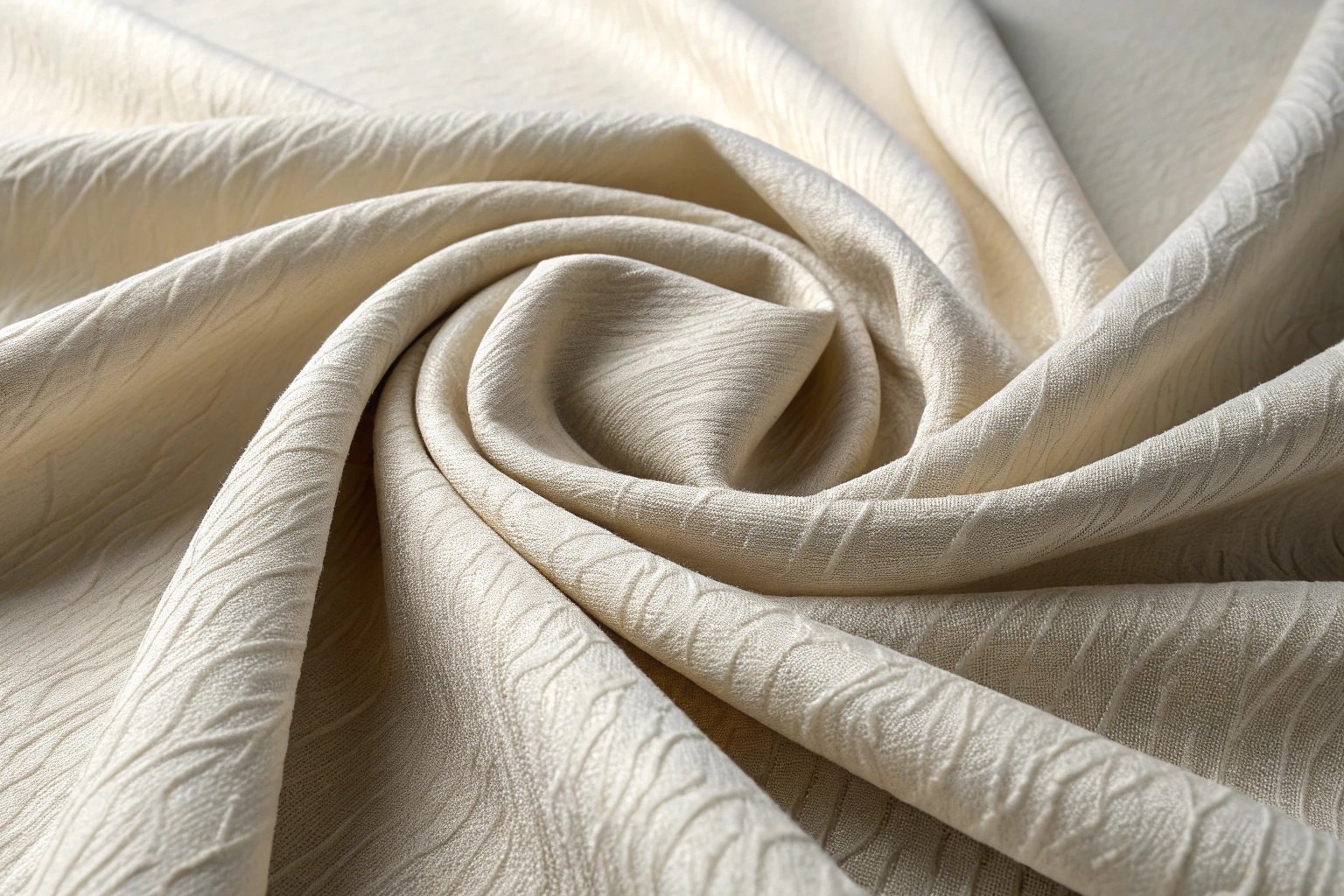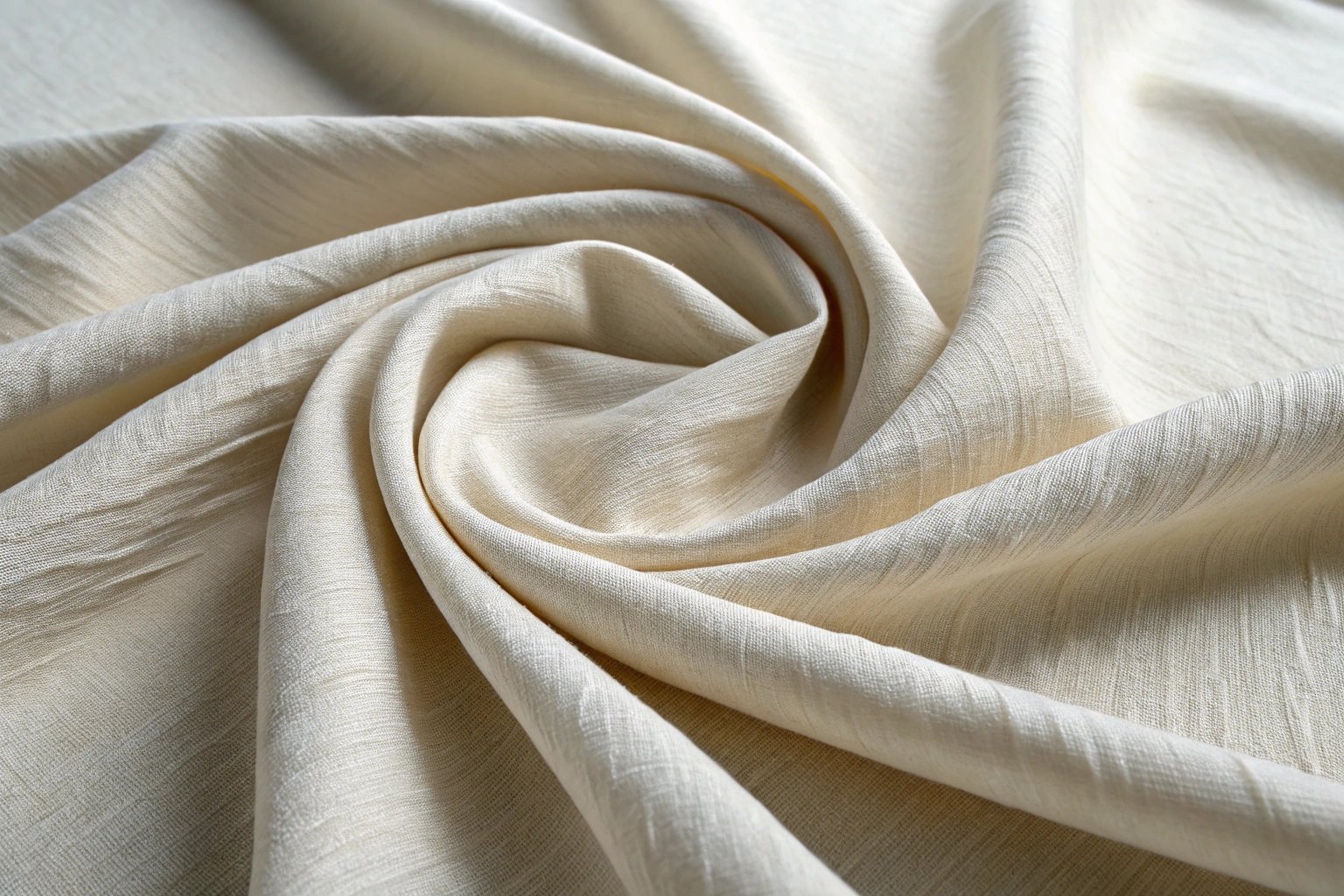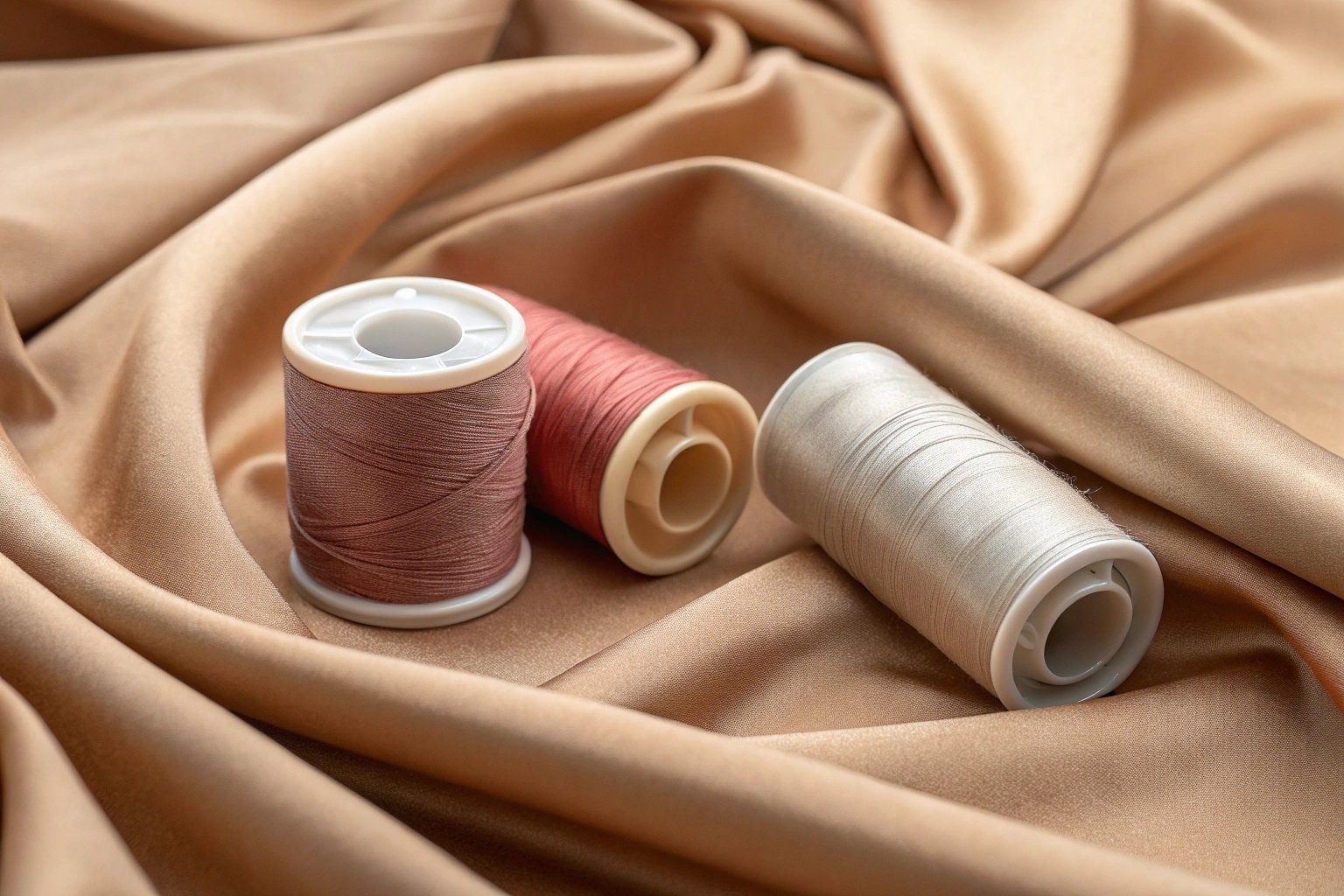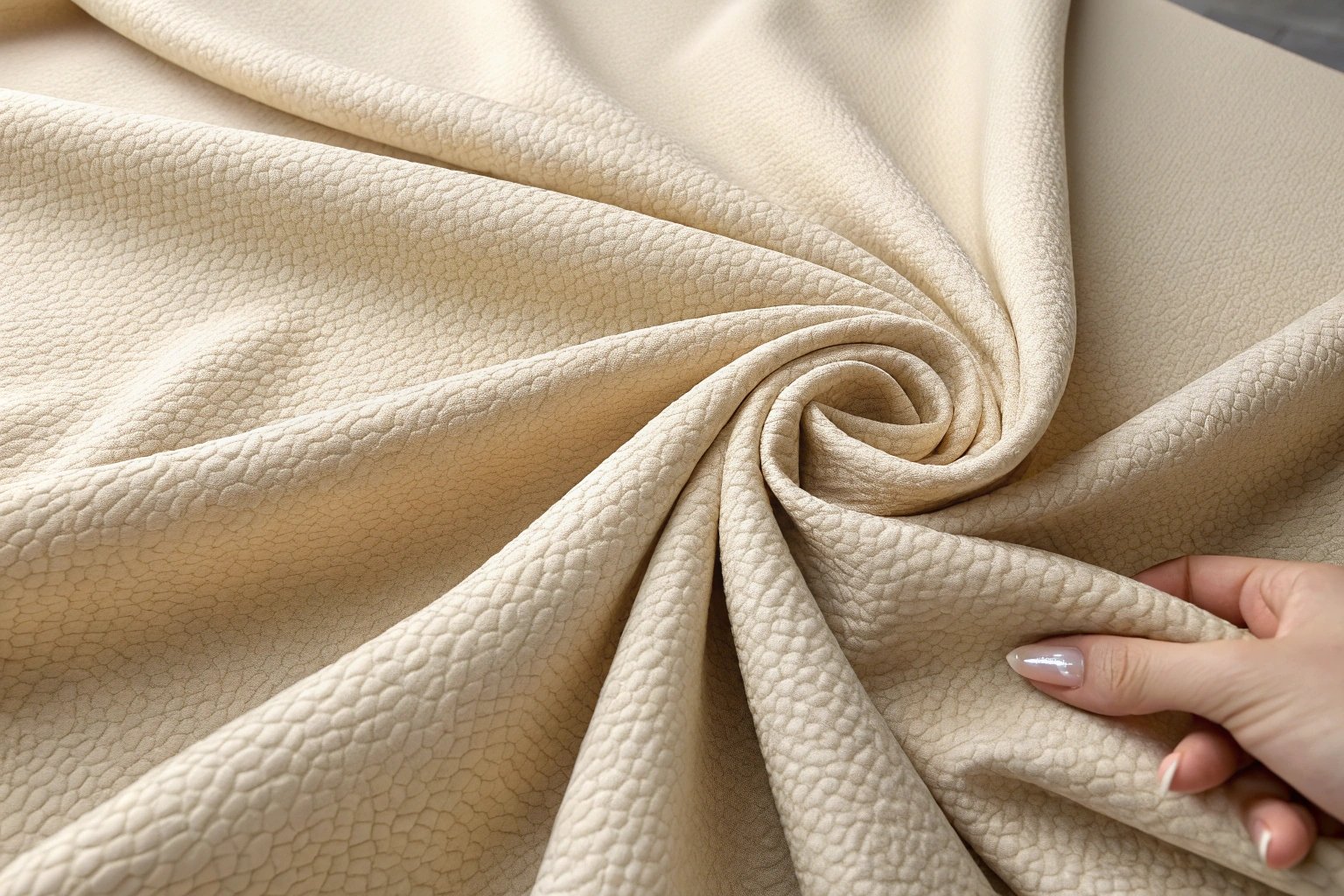Crepe fabric is renowned for its distinctive texture and elegant drape, making it a favorite in high-end fashion and formalwear. The fabric’s characteristic crinkled surface adds depth and sophistication to garments, whether used in dresses, blouses, or evening gowns. Its versatility allows designers to craft pieces that flow gracefully and hold visual interest without the need for elaborate embellishment.

In this guide, I’ll walk you through the essentials of crepe fabric—its types, advantages, drawbacks, and how to select and care for it—so you can confidently incorporate this timeless material into your wardrobe or product line.
What Are the Disadvantages of Crepe Fabric?

Despite its beauty, crepe fabric does come with certain drawbacks. One of the main issues is its tendency to snag and fray, especially in lighter silk crepes. The fabric’s texture, while attractive, can be delicate, requiring careful handling both during sewing and while wearing.
Another challenge is wrinkling. While polyester crepe offers better wrinkle resistance, natural fibers like silk and wool crepe may crease easily, particularly after washing or extended wear. This means garments may require steaming or professional pressing to maintain their smooth, elegant appearance.
Lastly, care requirements can vary widely. Silk crepe generally needs dry cleaning or gentle hand washing, while polyester blends are easier to care for. Mismanaging the care process can lead to fabric distortion or loss of drape.
What Is the Best Type of Crepe Fabric?
The best type of crepe fabric depends on your intended use. Each type of crepe offers unique characteristics:
-
Silk Crepe: Known for its luxurious feel and natural sheen, silk crepe is lightweight and ideal for evening gowns, scarves, and high-end blouses. It drapes beautifully but requires careful handling.
-
Wool Crepe: This type is warmer and has a more structured drape, making it perfect for suits, skirts, and winter dresses. Wool crepe is slightly heavier and provides excellent coverage.
-
Polyester Crepe: An affordable, low-maintenance alternative, polyester crepe holds its shape well and is resistant to wrinkles. It’s great for everyday wear and budget-friendly fashion.
-
Crepe de Chine: A finer, softer silk crepe with a more subtle texture, Crepe de Chine is perfect for flowy dresses and blouses that need to maintain an air of elegance.
Choosing the best crepe comes down to balancing aesthetic goals, practical needs, and fabric care preferences.
What Is the Best Thread for Crepe Fabric?

Selecting the right thread for sewing crepe fabric is key to ensuring clean seams and maintaining the fabric’s delicate drape. A high-quality polyester thread is often the best choice. Polyester thread offers the strength and slight elasticity needed to work with the subtle stretch of crepe without causing puckering.
For silk crepe, you might opt for silk thread if you want to match the fabric’s luster and ensure a more seamless finish, especially in high-end garments. However, polyester thread remains a reliable, versatile option for most crepe fabrics and is also easier to source.
Regardless of the thread type, it’s important to use a fine needle (such as a size 70/10 or 80/12) to avoid leaving noticeable holes in the fabric. Additionally, always test your stitch tension on a scrap piece of crepe before sewing your final garment.
How to Identify Pure Crepe Fabric?
Identifying pure crepe fabric involves both visual and tactile inspection. The most distinctive feature is the crinkled or pebbled surface. This texture comes from the special weaving or twisting process used during production. In pure crepe, the texture is consistent across the fabric and feels slightly grainy to the touch.

Another way to identify pure crepe is by its drape. The fabric typically falls in soft folds and moves fluidly. When held, it should feel light yet substantial, with a slightly springy texture.
If you’re handling silk crepe, you’ll also notice a subtle natural sheen and a warm feel against your skin. Synthetic crepes may have a cooler touch and a more uniform surface with less natural variation.
When purchasing crepe fabric, request a sample swatch and perform a close inspection. If possible, compare it to known samples of pure crepe to familiarize yourself with the authentic texture and weight.
How to Choose Crepe Fabric for Different Applications?
Choosing the right crepe fabric starts with understanding your design goals and the functionality required:
For eveningwear or formal blouses, silk crepe or Crepe de Chine is ideal due to its fluid drape and luxurious appearance. These fabrics convey sophistication but need more delicate care.
When creating structured dresses, skirts, or suits, wool crepe is excellent thanks to its heft and shape retention. It adds warmth and works well for fall and winter collections.
For everyday fashion or budget-conscious designs, polyester crepe offers an affordable, easy-care solution. It resists wrinkles and holds its shape, making it ideal for garments that see frequent wear.
Always consider care requirements in your decision. Silk and wool crepes need more careful handling, while polyester blends offer greater practicality for mass-market or low-maintenance products.
Conclusion
Crepe fabric offers a unique blend of texture, elegance, and versatility, making it a favorite for both high-fashion pieces and everyday garments. Whether you’re designing a flowing evening gown or a crisp tailored suit, understanding the different types of crepe and their care requirements will help you make informed choices.
Though crepe comes with some challenges—like its delicate nature and varied care needs—its ability to deliver visual interest and luxurious drape makes it a standout fabric in any collection. Choose the right type of crepe for your project, handle it thoughtfully, and you’ll achieve stunning, sophisticated results.

